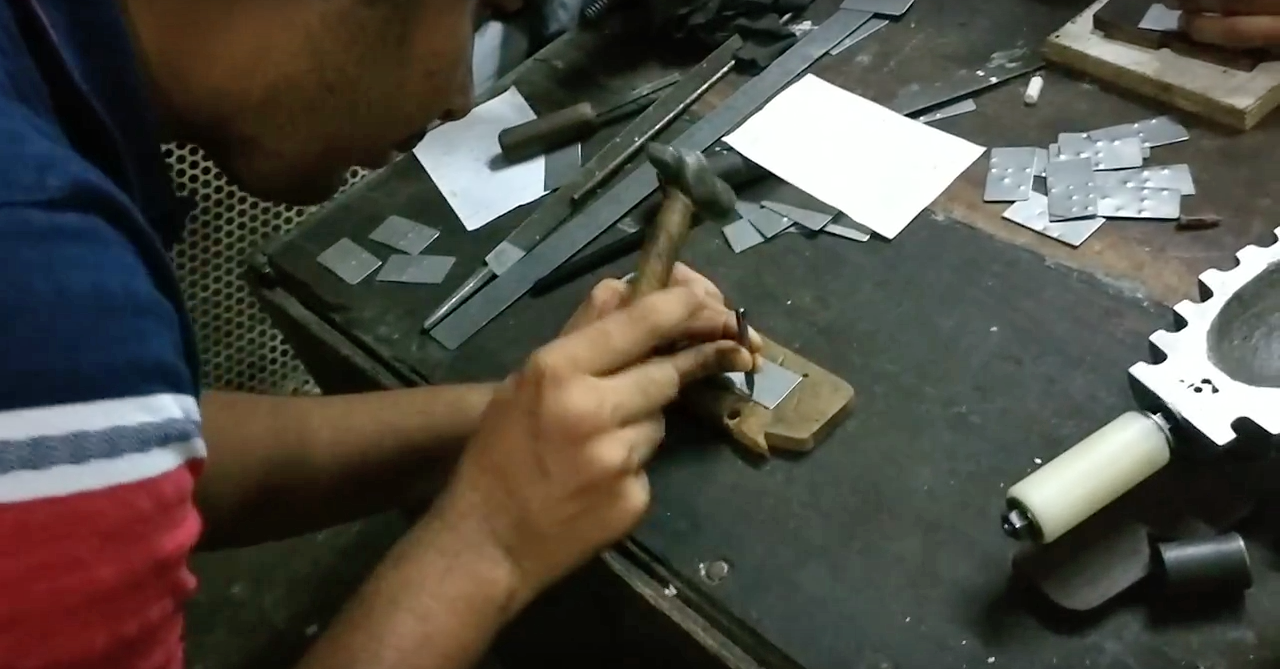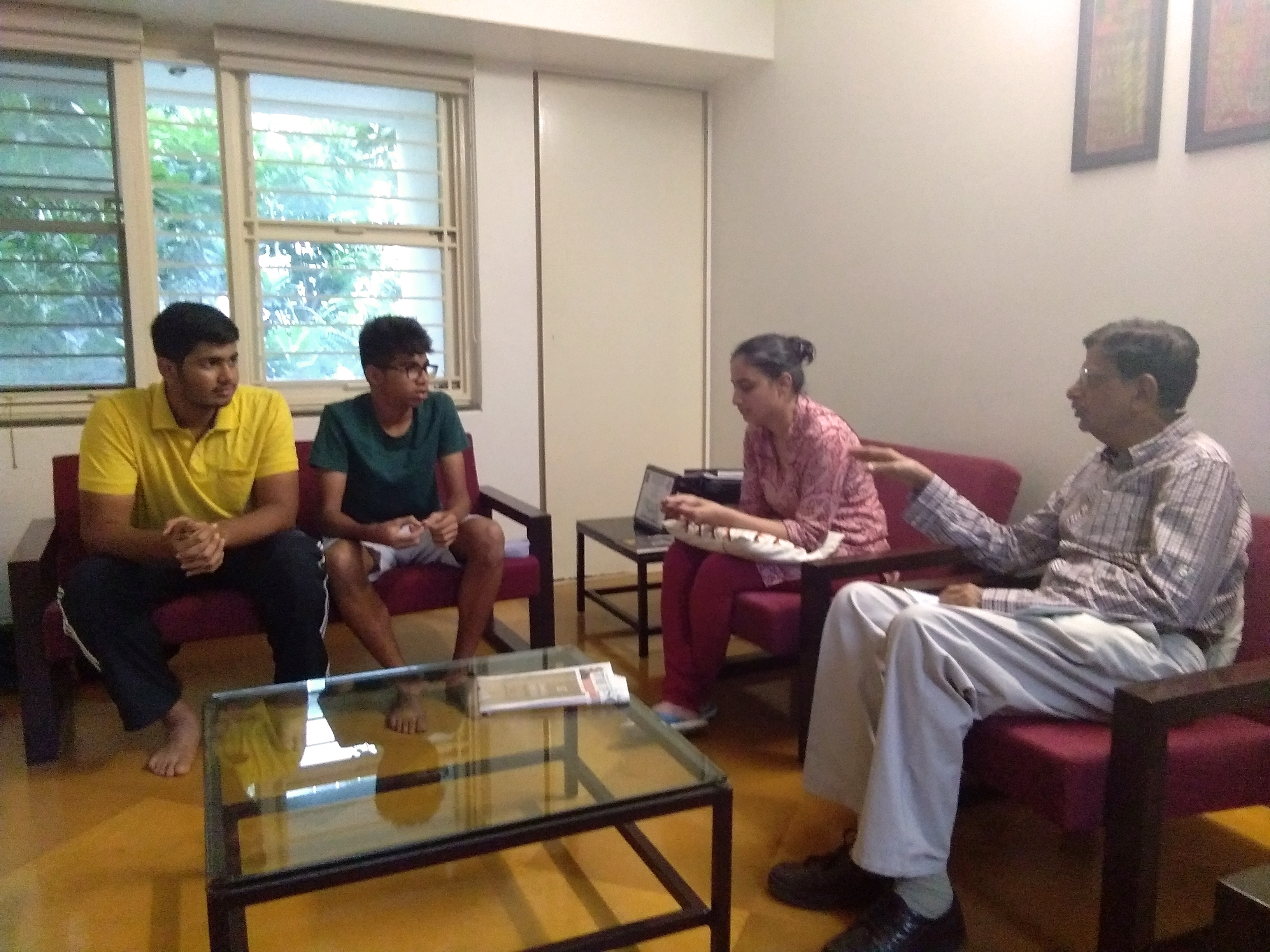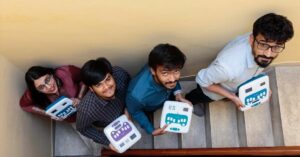This Brilliant Idea By Rajkot Kids Could Make Life Easier for the Visually Impaired!
Students from The Galaxy School created braille numbering in elevators of residential apartments in Rajkot, and are on a mission to demand infrastructural support for India’s blind population.

The number of blind people in India is nearly equal to the population of Bengaluru. As of 2017, India housed one-third of the world’s blind population, at a staggering number of 12 million people. Yet, public infrastructure rarely takes into consideration the needs of the visually-challenged. While many countries have supportive infrastructure like tactile pavements and voice assistance at road crossings, in Indian cities like Rajkot, there is no braille on public signages. Support is limited to audio announcements made at bus stops.
Five students of The Galaxy School, Wadi realised that this was a big issue in their city and felt the need to take the matter into their own hands and set an example. They expressed,
“They (the visually-impaired) are always dependent on others to help them travel and navigate around the city.”
Talking to teachers at Shree V D Parekh Andh Mahila Vikas Gruh, a school for the blind in Rajkot, Gujarat, the kids learnt that being independent is the hardest thing for blind people, owing to lack of infrastructure. Because of this, their family members, who always have to be around them, also suffer.
But how could the kids possibly make an impact on a problem so big?

To do this, they followed the simple 4-step formula of ‘Feel-Imagine-Do-Share’ developed by Design for Change – a not-for-profit organisation that challenges children to solve problems in their communities.
Undaunted, they decided to focus on one particularly troubling area and begin there. The group of 15-year-olds realised that elevators of public and commercial buildings like Reliance Mall neither have braille numbering nor voice assistance. 84.9% of the people they interviewed in Rajkot said that they don’t have these interventions in their residential apartments either.
The kids chose to intervene in residential apartments, believing that “Home is the first place where a person, whether visually-challenged or not, should be able to travel easily and independently.”
Brainstorming, the students – Kathan Pandya, Darshit Sonwani, Shreyash Bhanderi, Khushi Changela, Dhruwang Akabari – under the mentorship of Sakina Bharmal, thought of various ways to approach the problem. They could create buttons bearing braille numbering in elevators using glue gun drops, clay lumps, beads or soldering drops. After a long process of trial-and-error, the students made their selection.
They would create Braille numbering using nail and hammer on plates, and install these in residential apartments in Rajkot.

With the help of Silver Pumps, an engineering company based in Rajkot, they created metal plates and embossed the braille numbering onto these plates themselves, using nail and hammer. The students then tested their product at Shree V D Parekh Andh Mahila Vikas Gruh with some students and teachers to see if they were easily readable.
They then installed the plates in elevators of two buildings, Sapphire and Tulsi Sugan.

Some of the girls from the school for the blind later used the elavators and shared,
“If the infrastructure is well-built then maybe, when we grow up, we will be able to walk and move around in the city more easily.”
The students proceeded to share their idea with Blind People’s Association India, who thought this to be a commendable “small step towards more awareness and change.”
“We (also) decided to talk to builders and architects because they were very important stakeholders in the field of infrastructure.”

They met up with architects Shailee and Kishore Trivedi, and Gaurav Sonwani, a partner at the real estate group RK Associates, who expressed,
“We never realised simply adding braille to the elevators of the buildings we build will make a huge difference. We will now make sure this happens and will do our best to add more infrastructure to help the blind.”
Approaching the Rajkot Municipal Corporation, the kids asked for assistance in implementing such changes. The Corporation agreed with the concerns raised, expressing that infrastructure is not well-developed for visually-challenged people. The students now want to gain further government assistance to “make it mandatory to have braille or voice assistance in elevators” and plan to resume talks later this year.
Also Read: Thanks to These Kids, You Won’t Have to Sweat in the Kitchen While Cooking!
Their immediate plan is to install braille plates in more areas of Rajkot, especially at public places like malls and offices.

They are also in talks with Silver Pumps to mass produce these plates, and hope to rope in the support of Otis Elevator Company.
The project was recognised at the ‘I CAN Awards 2017’, an award ceremony organised by the non-profit Design for Change. It was selected in the ‘Long Lasting Impact’ category. Since 2009, the annual ‘I CAN Awards’ have attracted 14,000 stories of change from school children all over India who have followed the Feel-Imagine-Do-Share (FIDS) model of design-thinking to create social change in their communities.
Watch the full story of how these kids made these braille plates for elevators in Rajkot:
Inspired to raise awareness about infrastructure for the blind in your city?
According to the primary research carried out by these students, the Delhi metro is one of the only places in India, so far, to have infrastructure like tactile markings near elevators, buttons with braille numbering and tactile pavements. Mysuru is the first city in India to introduce elements like tactile layout maps to make travelling easier for the visually-impaired. There’s still a lot of awareness left to be built about the needs of the huge population of visually-impaired people in India. Be inspired to join the movement started by these kids at The Galaxy School!
You May Also Like: Nashik Students Design Online Exam That Could Ensure Road Safety of Your Kids!
Be part of one of the largest global movements of children driving social change in their communities. Take up the ‘I Can’ School Challenge in your classroom. Find out more online.
Like this story? Or have something to share? Write to us:
[email protected], or connect with us on Facebook and Twitter
(@thebetterindia).
This story made me
- 97
- 121
- 89
- 167
Tell Us More
We bring stories straight from the heart of India, to inspire millions and create a wave of impact. Our positive movement is growing bigger everyday, and we would love for you to join it.
Please contribute whatever you can, every little penny helps our team in bringing you more stories that support dreams and spread hope.




















